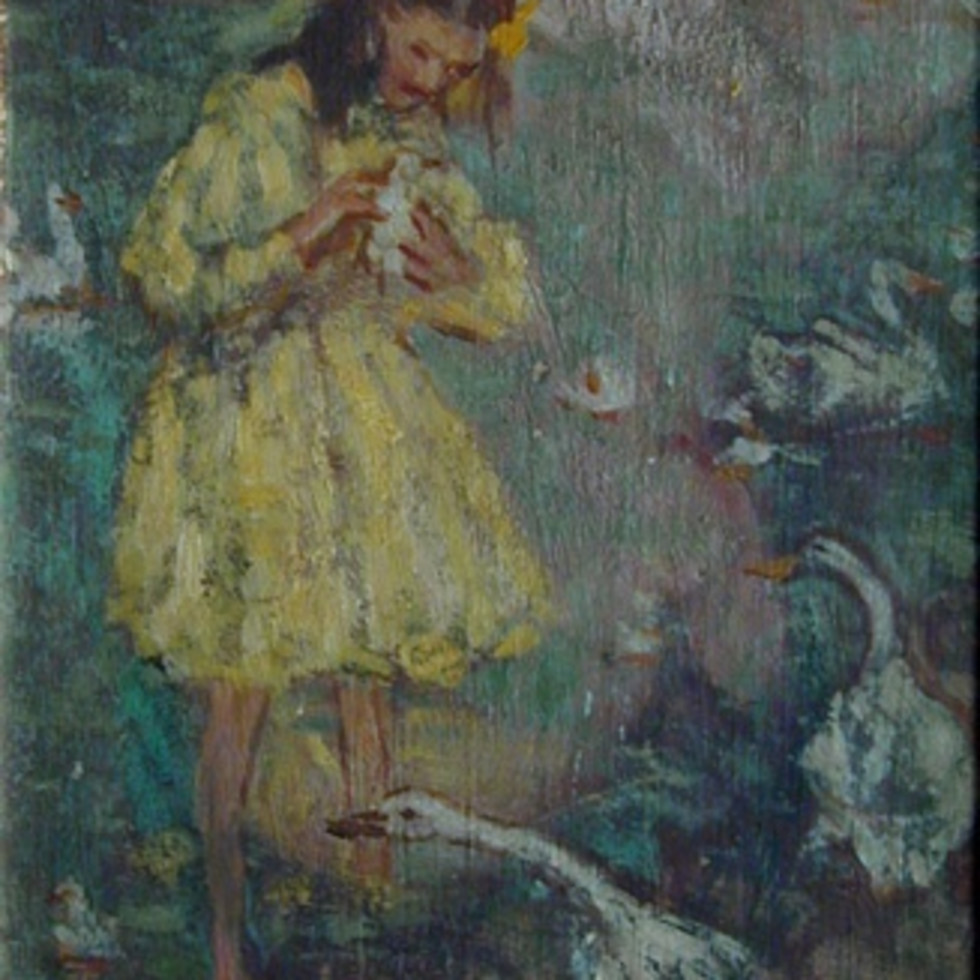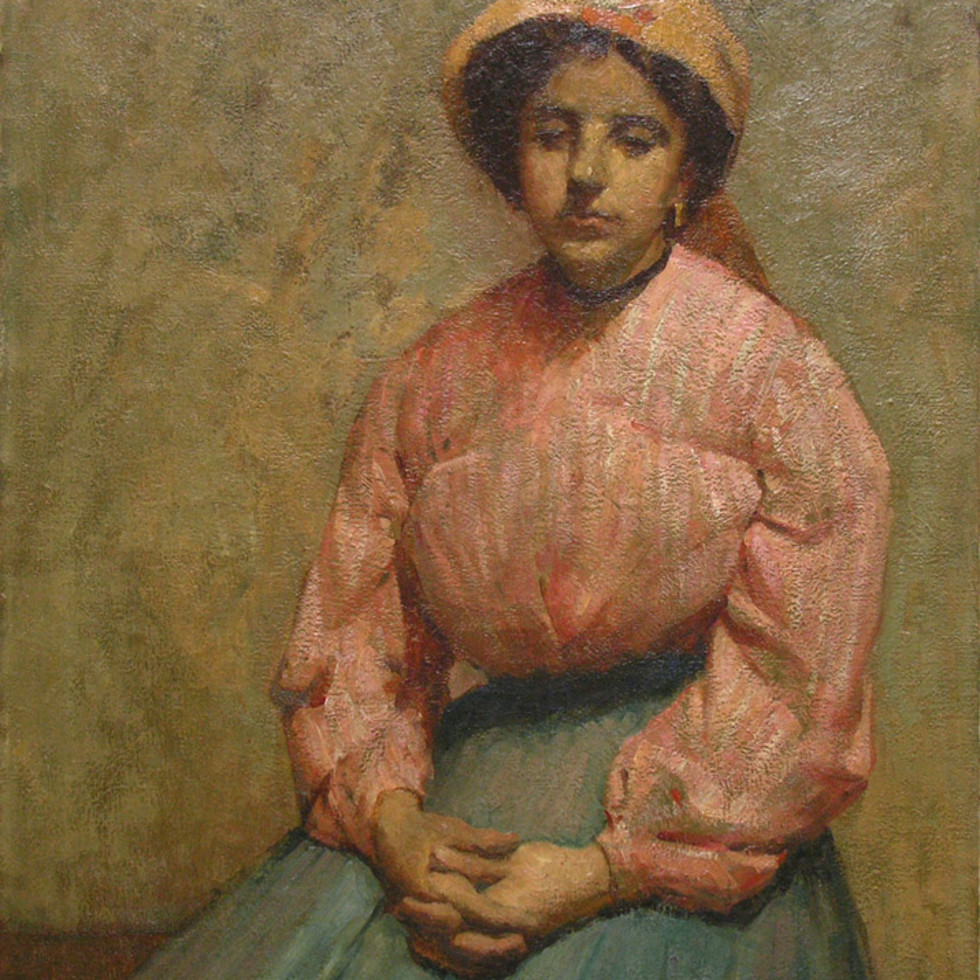Emily Coonan
 "By 1913 the Daily Herald in its review of the Art Association’s spring exhibition was referring to her as the Point St. Charles prodigy and declared, 'Miss Emily Coonan … has a group in her highly characteristic style and a portrait [Girl in Green] which shows a distinct advance in the sense of form.'"
Evelyn Walters, The Women of Beaver Hall, 2005
"By 1913 the Daily Herald in its review of the Art Association’s spring exhibition was referring to her as the Point St. Charles prodigy and declared, 'Miss Emily Coonan … has a group in her highly characteristic style and a portrait [Girl in Green] which shows a distinct advance in the sense of form.'"
Evelyn Walters, The Women of Beaver Hall, 2005
by Mary Trudel
Assuredly the most reclusive member of the Beaver Hall Group, Emily Coonan lived all her life with her family in Pointe-Saint-Charles. Coonan was the only member of the Group who was not a part of the Montreal Protestant elite. She was of Irish heritage and a devout Roman Catholic with strong opinions. Lilias Torrance Newton described her as, "a very odd, shy, strange person... a real loner." Coonan never actually made friends with her fellow painters and only exhibited for a short time between 1908 and 1930, making it difficult to find paintings by Coonan because her production was limited and she did not exhibit after 1930. Due to the fact that she was such a private person, perhaps she felt she no longer needed to expose herself to any unwarranted criticism or attention. There was also some speculation that she had a disagreement with the Art Association of Montreal. By that time she had three paintings in the National Gallery of Canada.
Although the Coonans were not wealthy, they strove to give their children a good education and made sure that money was made available for music or art lessons. At the Art Association of Montreal, where Coonan studied from 1905 to 1912, she became William Brymner's star pupil. With his encouragement, Coonan and Henrietta Mabel May traveled to France, Belgium and Holland in 1912, where they painted full time.
Coonan won several awards during her short professional career. The most important of these was probably a traveling grant awarded to her by the National Gallery of Canada that permitted her to return to France for a second time. She was the first to win the award in 1914, but the trip had to be postponed until 1920 due to the outbreak of WWI.
If it can be said that she experienced a certain degree of success between 1900 and 1915, things were different when she returned from her second trip to Europe. Critics were perhaps unready for her modernistic approach and the influence of French impressionism and post-impressionism that appeared in her work. Coonan had become less concerned with her subjects or of nature, and more with motifs and texture. The motto, "art for art" remained her approach right up until the end of her career.
Coonan admired the impressionists and the works of James Wilson Morrice. Her preferred subject matter included portraits, interiors and groups of children. By 1920, her figurative work began to show modernist influence as her backgrounds became devoid of detail, accessories were eliminated and faces were simplified. Coonan had been invited to exhibit with the Group of Seven although her paintings were mostly impressionistic landscapes à la française and not at all of a Canadian vision.
Emily Coonan lived the first 83 years of her life on Farm Street, where she had been born.
© Mary Trudel and Galerie Walter Klinkhoff Inc.












